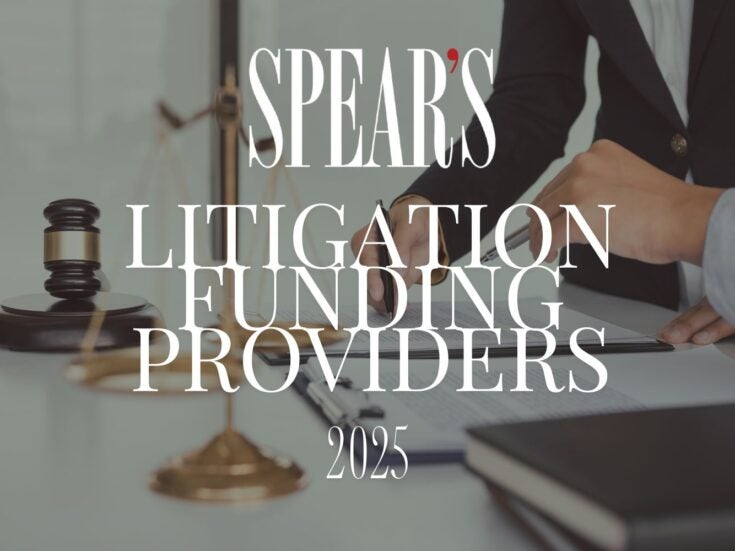
Property ownership can be a difficult issue for courts to resolve when two or more parties go their separate ways, says Martyn Gowar
ONE OF THE difficult areas on which one is often called to advise is where property has been bought by more than one person and it has not been settled clearly (or indeed at all) at the outset as to who owns it in what proportions.
Of course, it’s all too easy to say that the problems should have been sorted out by the parties, but that is a pretty cruel simplification of what are very often complex issues. Somebody moves in with another person. Will it last? Some people take much longer than others to commit themselves to a full-scale relationship; others find it constitutionally impossible to do so at any time. Some are grasping and need the security of property ownership, while others, from an outside point of view, are much too trusting.

And then the point comes at which ownership becomes a problem. The relationship breaks down, one of the owners dies, or perhaps one of the parties is in financial trouble and their share of the ownership is demanded by creditors. Or, maybe, the parties sit down and say: ‘We ought to do something about this,’ but can’t agree.
The law in this area as regards husband and wife (extending to the rights of civil partners) has been under judicial scrutiny, and has also developed over the past ten years. This reflects the rapid increase in property values, which makes it worth arguing about its division. However, there have been relatively few developments in cases where the parties were not married.
A recent decision of the Court of Appeal in the case of Gallarotti v Sebastianelli is a case in point. Here were two friends who lived in London and enjoyed each other’s company over a number of properties and a number of years but went their separate ways. The last property they had bought in the name of one of them had been funded in haphazard amounts, and expenses were met by whoever had money at the time. Were this a relationship of husband and wife there is very little doubt in my mind that the court would have said that the property was to be split on a 50:50 basis, but there was no marriage. There was no civil partnership, and indeed no love interest.
So what does the court do in these circumstances? In practice, it can rely on a number of legal devices. In the first case, the court always will look at any express declaration of trust and that will be honoured unless there are good reasons to move from it. A court will need to be very firmly convinced that it no longer reflects the parties’ intentions and the reality of the situation. But in the absence of such a declaration, the court has to try to make sense of what the parties did intend.
IT WAS SUCH a case that came to the Supreme Court at the end of 2011 in Jones v Kernott. A house was bought in the joint names of Mr Kernott and Ms Jones and they had two children. They lived together for twelve years until Mr Kernott moved out. From then on Ms Jones took over sole responsibility for the property and lived there for the next twelve years. But at that time Mr Kernott claimed that he still owned 50 per cent of the property, and although the Court of Appeal found in his favour, the Supreme Court found that in the circumstances of the case the appropriate shareholding was that Ms Jones had 90 per cent and Mr Kernott 10 per cent.
The Court’s approach was said to start from the principle that ownership is 50:50 even where there is not an expressed declaration of trust, but that that presumption can be displaced by showing that the parties had a different intention at the outset, or that the intention changed during the course of ownership.
The question then arises as to how you work out those intentions if, almost by definition, they have not been laid down in writing. The answer is that the court has to look at what happened in fact. It’s not just looking at what people said or what people paid, but one has to look at all the things that contributed to that ownership, so it is a wide search. The problem that always comes to light is that two parties looking at the same set of facts can draw different conclusions.
Consider the problem for the adviser. How can you tell a client how the court is going to decide when one court held that the correct division is 50:50 and the Supreme Court 90:10?
Additionally, only a certain percentage of people are careful enough in the way in which they keep records, and the difficulties in trying to assemble the facts can be a nightmare. Given that the problem will only fall for resolution at a time when something has gone wrong, the outcome is likely to be expensive to achieve and fraught with tensions.
For years the Law Commission has been suggesting that this problem needs legislative action, but it would be sensitive because you have to judge how far you bring marriage concepts into play. But I have to say that I think it is a bit more of a practical priority than House of Lords reform.
Read more by Martyn Gowar
Don’t miss out on the best of Spear’s articles – sign up to the Spear’s weekly newsletter
[related_companies]






